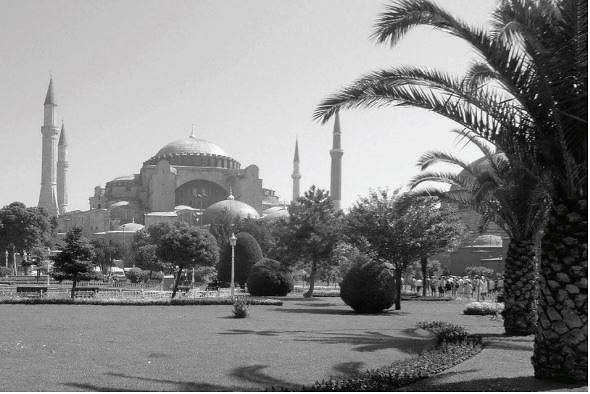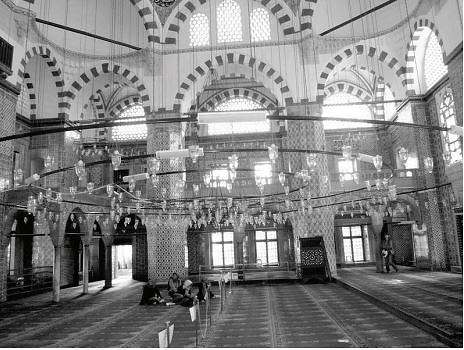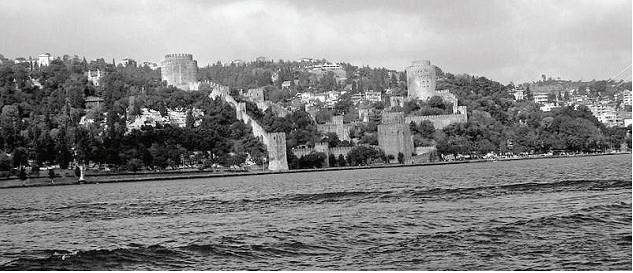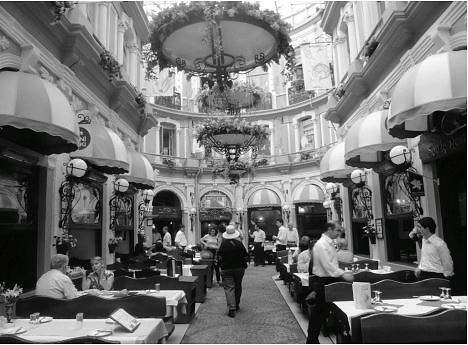ISTANBUL
Istanbul is a city of contrasts — a mixture of East and West, antiquity and modernity. This contrast is evident from the moment of arrival at the airport, where travelers in trendy outfits and others in traditional garb bustle about side by side. Otherwise, they live in a patchwork of neighborhoods in a sprawling city of 18 million, bisected by the Bosporus into the European and Asian sides.
The Sultanahmet district — the administrative and religious base of the Roman, Byzantine, and Ottoman Empires for more than 2000 years — was where we stayed for the first three nights. Traditional Ottoman houses, whıch have now been restored as hotels, line the narrow cobblestone streets of this district, which sits on top of ancient Byzantium.
Haghia Sophia, the Church of Divine Wisdom looms over historic Sultanahmet Square. Built by Emperor Justinian in 537 AD, this structure was a Byzantine cathedral for its first thousand years, becoming a mosque in 1453, when Constantinople fell under Turkish rule. Made a museum under the Turkish Republic, Haghia Sophia has since been under perpetual restoration, as all its mosaic imagery had been whitewashed during Ottoman times. Restored mosaics shimmer in the dim light of the high dome, along with Arabic calligraphy from the Koran.

Haghia Sophia Museum
Our walking tour included Topkapı Palace, which was built by Mehmet the Conqueror shortly after the conquest of Istanbul in 1453 and served as the royal dwelling of the Ottoman sultans until 1853. The palace consists of pavilions surrounded by four large courtyards. Today it is one of the world’s richest museums; its treasury is famed for its giant diamond and its emerald dagger. The palace complex and its collections grew as new sultans came to power and conquered more lands. During the reign of Ahmet III (1703-1730), who loved tulips, the courtyards blossomed with flowers. His reign is known as the Tulip Period, when Turkish tulips inspired the Dutch.
Separate admission is required to visit the Harem, a word driven from haram, meaning “forbidden” in Arabic. Until they were reeducated and renamed, the sultan could not touch the concubines, who were Christian girls, captured or bought in other countries; the majority were blue-eyed blondes from Bulgaria, Georgia, Poland, or Russia. They acquired positions as favorites, mothers, and wives. The sultans had stallion duties to perform; each ruler was the son of a foreign slave. The buildings, with barred windows, connect through stone passageways; they contain tiled and painted rooms with arched doorways, large chambers, and numerous baths. The Harem functioned from the 15th to the early 20th century. It was abolished and the women dispersed following the defeat of the Ottoman Empire in World War I.
Another landmark in the historic center of Istanbul is the Sultanahmet Mosque, which lends its name to the square it dominates. Shimmering blue Iznik tiles in the interior of the structure give it the alternate name of Blue Mosque. Constructed between 1609 and 1616 under the patronage of Sultan Ahmet I, the mosque graces the city skyline with its six minarets. During our tour, Turkish locals, who recognized us as Americans, proudly mentioned that President Obama had visited the site. Across from the Blue Mosque is the Museum of Turkish and Islamic Arts, formerly the Ibrahim Pasha Palace, well worth a visit both for its Ottoman architecture and for its collections of calligraphy, ceramics, and carpets.
A highlight in the old district of Istanbul is the Basilica Cistern, southwest of Haghia Sophia. This is an underground cistern built on the site of a basilica, hence the name. Built by Byzantine Emperor Justinian in 542 AD to meet the water needs of his Great Palace, the cistern is a rectangular structure of 140 by 70 meters, with 52 stone steps descending to water level. 336 nine-meter-tall marble columns fan out in 12 rows of 28 each, reflecting in the water they stand, for an effect which multiplies both their numbers and their magnificence. Arches distribute weight to the columns by connecting their Corinthian and Doric capitals, creating an impressive visual effect in the ceiling of the red brick construction. Inverted Medusa heads form the bases of two of the columns. Whether these heads happened to be in the pile of available construction material or were used as bases on purpose is a matter of speculation. Because of the magnificence of this ancient structure, locals refer to it as Yerebatan Saray or “Sunken Palace.”
The Grand Bazaar, with its vaulted tunnels, offers an experience in wending through crowds. It is a covered maze of 4000 shops selling everything from modest souvenirs to priceless treasures, including a great deal of gold. The small shops, although crammed with wares, are very orderly. Vendors bargain in a great variety of languages. Since so much is imported from China or India, I had to go to three different shops to ascertain whether a type of silk scarf I liked was made in Turkey. It turned out that the raw material and design were Turkish, but the scarves were made in India because of cheaper labor. For major purchases in the Grand Bazaar it is best to go with someone familiar with the place.
The Spice Bazaar is Istanbul’s second largest old market, with 88 vaulted rooms where every imaginable spice and herb, as well as sweets, traditional appetizers, and gifts, are sold. All items are neatly sorted for the eye — caviar, dried fruit, and varieties of tea. Dried vegetables, such as strung eggplant and okra, hang like ornaments; varieties of lokum (Turkish delight) entice passers-by to taste them, while colognes of various scents are offered for freshening up. Blue glass evil-eye bead talismans in attractive heaps catch the eye; called nazar boncuğu, the bead has been traced back to Siberian shamans.

Interior of
Rüstem Pasha Mosque
A cruise on the Bosporus gave us a break from the bustling old city. On the way to the boat landing we visited the Rüstem Pasha Mosque in Eminönü. Built by the famed Ottoman architect Sinan in 1561, this small mosque has beautiful interior and exterior tilework. The pasha, who was married to Sultan Suleyman’s daughter, Mihrimah, had the mosque built for his wife. Since multiple minarets were reserved for sultans, this mosque has a single minaret. We walked by pigeons crowding the courtyard of the Yeni Mosque, a majestic sultan’s mosque on the seashore with multiple minarets. Vendors with carts selling bird seed and people feeding pigeons on the square in front of the mosque make this area a picturesque landmark.
We embarked at the mouth of the Golden Horn, an inlet of the Bosporus which divides the European side of Istanbul into the modern Galata and Beyoğlu sections to the north and the old city to the south. The Galata Bridge spans the Golden Horn to link these two parts of the city. The northern districts were residential and business sections for non-Muslims during the Ottoman Empire, which was marked by religious tolerance. Jews, Armenians, and Orthodox Greeks lived in the neighborhoods of Galata, Beyoğlu, and the Golden Horn. The Bosporus is a strait dividing the European and Asian sections of Istanbul and forming a route from the Sea of Marmara to the Black Sea.

Bosporus shoreline
The best way to enjoy the Bosporus shoreline is by boat. In addition to chartered cruise boats, there are ferryboats that leave at scheduled times. We cruised halfway up the Bosporus to the second bridge along the European shore, then returned along the Asian shore. Both shores are graced by fine houses, along with occasional collapsed wooden ones, known as yalı. Ottoman palaces, luxury hotels, and fishermen enhance the scenery. During the cruise we enjoyed tea and snacks, which included kâğıt helva (“paper halvah”), a large round wafer with sweet filling.
On our final day, we explored the trendier parts of Istanbul. Ortaköy, a neighborhood on the European shore of the Bosporus, has a weekly Saturday market for artisans, who sell their own crafts along with imported ones. We enjoyed walking around the stalls, admiring the creative crafts, and picking up gifts to take home. Take-out food stands beckoned with large baked potatoes, called kumpir; crepes cooked to order with assorted fillings; and Turkish hamburgers, called köfte. In the evening, with the first Bosporus Bridge in the background, this area around the Ortaköy Mosque, built in 1854 for Sultan Abdülmecit, turns into a place for celebration.

Art Nouveau arcade
Beyoğlu is the heart of Art Nouveau Istanbul. İstiklal Avenue, now an elegant pedestrian street, is the heart of this district, which always hums with entertainment and culture, including galleries with the latest word in fashion. A historic streetcar runs up and down İstiklal Avenue between the “Tunnel,” a small train providing a ride uphill from the Galata district, and Taksim, the city’s largest public square. Instead of riding the streetcar, we walked up the Avenue, going in and out of Art Nouveau arcades with shops and cafes. Midway we had a refreshment break at a stand selling Maraş ice cream. A specialty of the southeastern city of Maraş, this ice cream is slowly hand-churned over ice, acquiring a uniquely thick consistency.
Our three-day visit to Istanbul was too brief for us to fully appreciate this multifaceted city. One needs a minimum of a week’s stay to experience this constantly pulsing world-class city — modern and traditional, European and Asian, cutting-edge and conservative, two millennia old, yet thrillingly hip. The museums mentioned in this article are but a few among the 80 in the city.
For those who enjoy the countryside, a day trip by ferry to the Princess Islands is a good choice. There is no motor traffic on the islands; horse carriage and donkey are the only modes of transportation. The up-and-coming area around the Golden Horn is an increasingly popular visitor destination as its former ethnic neighborhoods continue to be restored.
With our group’s proven stamina, enthusiasm, and appetite, we flew to Nevşehir to begin our next exploration.
← Turkey (3) (main page)
